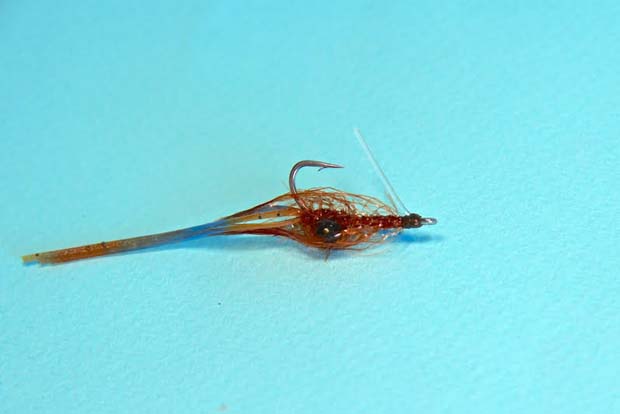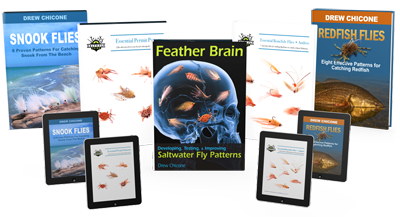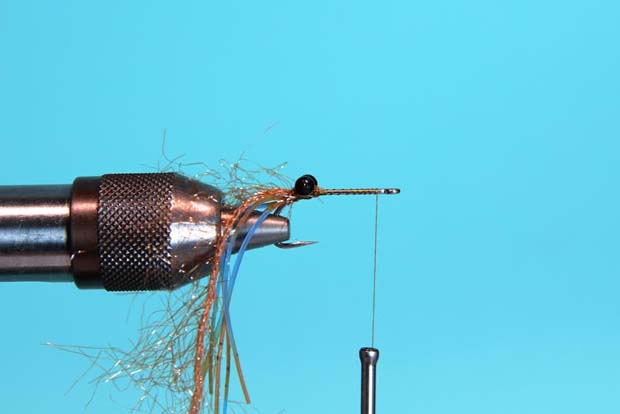If you’ve hung around fly fishing long enough, you’ll likely gravitate to fly tying
You’ll pick up lots of tips at shows, on YouTube and at symposiums dedicated to fly tying, but the flies pros tie are “5” star Michelin compared to yours, and that can lead to being disheartened.
The cure is to keep tying
Pay attention to what’s being eaten: frogs, terrestrials, shrimp, crabs, nymphs, duns, baitfish types and more. Once you start catching animals on a fly you’ve tied, voila.
Here’s a fruitful suggestion that will amp up you progress
There’s a guy named Drew Chicone, whom we’ve adopted as the reigning king of fly tying methodology. Drew is ‘all in’ on fly tying. He’s making a living at it and his value to you is his willingness to share. His printed books and tablet – ebooks are masterfully done, and inexpensive.
You can’t make a mistake, Chicone won’t let you
As you’ll see below, from recipe to instruction every detail is mapped out. A child capable of reading and possessing a modicum of dexterity could tie a fishable fly following Drew’s instruction.
Notably, he isn’t a one man show. Over the years, he’s invited lots of guide-tyers and independent tyers to his tying table so you get to a very rounded peek at flies that catch fish in fisheries around the nation, Bahamas, Belize and beyond.
Capt. Wil Flack’s Cocaine Crustacean
By Drew Chicone
[dropcap]S[/dropcap]everal years ago, after bonefish started snubbing the regular go-to flies: charlies, gotchas, etc. Belizean guide Capt. Wil Flack was experimenting with new ideas and looking for materials that you don’t see often in the salt. “As a fly tier you have to be constantly evolving. Learn from everyone, take what you know and what you see in other patterns and turn it into something. Then go fish it,” said Flack.
Originally the fly was designed to be fished on the limestone flats on the highest tides of the month in the backcountry. Basically floods on the new and full moons. The largest of Belize’s bonefish (5-8 pounds) show up to access these areas only a few days of the month.
Wil said: “The largest aspect of my fly tying is MAKE IT EASY. No one wants to spend 20 minutes tying a bug, except maybe Drew Chicone. When I’m tired after guiding all day I can still come home and bang out a few bugs for the next tide. Legs are the key to this fly, so make sure you leave them on the long side.”
Wil’s first versions of this fly were tied with Krystal hackle and brown legs, which is still a deadly pattern, but he found that the polar chenille offered more movement. The extra small bead chain eyes provide a soft presentation, and has proven deadly for the notoriously spooky large feeding fish. Smaller permit love this pattern as well. Tie it with heavier eyes for the deeper water (3 to 8-feet) and on size 4 hooks, preferably Diiachi’s, and it is crucial that all bonefish flies for Belize are tied up with weed guards.
Materials
Hook: Diiachi 2546 size 6 & 8
Thread: Danville Flat Waxed Nylon 210 – Olive
Eyes: Small Bead Chain, Black
Body: Polar Chenille, Olive Brown
Legs: Fly Enhancer Legs, Lt. blue/Pumpkin
Adhesive: Clear Cure Goo Hydro

Step 2:
Tie in 3-4 Fly Enhancer Legs, at their middle, and secure them with 5-6 snug wraps down the bend of the hook. This will angle the legs up slightly when the fly is riding hook point up.
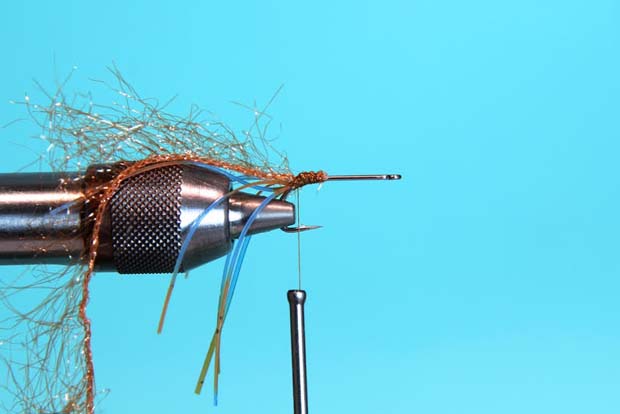
Step 3:
On top of the Fly Enhancer Legs, tie in Polar Chenille and wrap back to the bend of the hook.
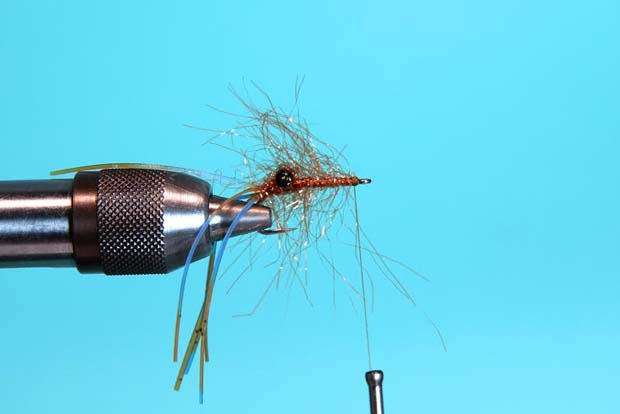
Step 5:
Palmer the Polar Chenille forward to the eye of the hook. Stroke back the fibers with each turn, being careful not to trap too many of the fibers.
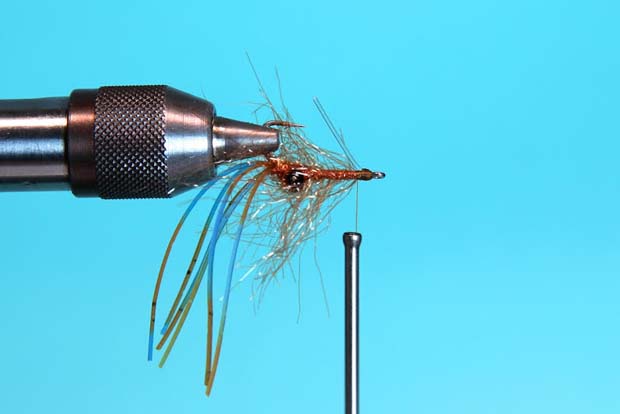
Step 6:
Turn the fly over in the vise, and tie in a 30# mono post weed guard. Trip the post off even with the barb of the hook. Whip finish behind the weed guard and cut away the thread. Apply a thin coat of Clear Cure Goo Hydro for a more durable fly.


